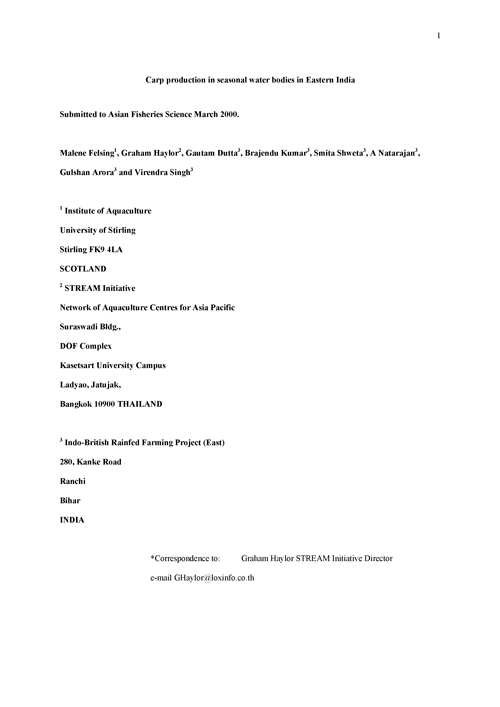Carp production in seasonal water bodies in Eastern India
30 January 2004 | Malene Felsing, Graham Haylor, Gautam Dutta, Brajendu Kumar, Smita Shweta, A. Natarajan, Gulshan Arora and Virendra Singh | 1056 Downloads | .pdf | 239.11 KB | Culture-based fisheries, Freshwater finfish, India
The feasibility of integrated aquaculture in seasonal water bodies in rainfed farming areas of Eastern India was assessed in on-farm trials. Fry of Indian major carps (IMC): Catla catla, Cirrhinus mrigala, Labeo rohita, common carp (Cyprinus carpio), and silver barb (Puntius gonionotus), and advanced fingerlings of IMC were raised to marketable size. Mean survival of fish varied, with silver barb showing a significantly (P<0.05) higher rate than IMC and common carp grown from fry. Silver barb grows to significantly (P<0.05) smaller sizes than common carps and IMC grown from advanced fingerlings.
Capital costs ranged from Rs2400-10,500 ($56-244), variable costs from Rs 2850-8950 ($66-208) per cycle. The species of fish and their size at stocking are important for ensuring success. Common carp and silver barb can grow fast enough to get to marketable size in a seasonal pond, whereas IMCs should be stocked at 14-16cm length if expected to grow to marketable size during the wet season.
Key factors for the success of aquaculture in seasonal water bodies are access to credit, production enhancing inputs and water bodies that hold water for more than 120 days of the year. The availability of low cost labour and the current livelihood strategy of the farmer are also important.
Creative Commons Attribution.

